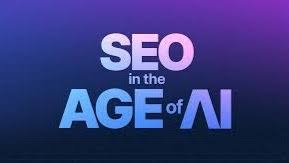🔹 Introduction
Search Engine Optimization (SEO) has never stood still, but the rise of generative AI, automation, and real-time search experiences is forcing every business to rethink how they attract and convert customers.
If your SEO playbook still relies on outdated keyword stuffing or manual link building, you are leaving massive revenue on the table.
Today, AI tools, predictive analytics, and automated workflows are defining who wins the organic growth race—and who becomes invisible.
🔹 Why Traditional SEO is No Longer Enough
The search landscape is evolving faster than most organizations can adapt:
- AI-generated search results: Google’s Search Generative Experience (SGE) and Bing Chat now surface AI summaries ahead of traditional rankings.
- Shifts in buyer behavior: Prospects expect fast, hyper-relevant answers, not a list of blue links.
- Explosion of competition: 91% of brands now invest in SEO, making it harder to stand out.
- Rise of content automation: Large Language Models (LLMs) are enabling faster, cheaper content production—but also raising the bar for quality.
To thrive, your SEO strategy must combine AI-driven automation, smarter conversion focus, and robust measurement of ROAS.
🔹 5 Modern Strategies to Future-Proof Your SEO
Below are 5 proven strategies you can deploy immediately to drive growth and measurable ROI:
1️⃣ Embrace Entity-Based Optimization
Instead of optimizing only for keywords, focus on building topical authority around entities—the people, brands, and concepts your audience searches for.
How to do this:
- Create content clusters around priority entities.
- Use schema markup to signal relationships between concepts.
- Optimize your brand’s Knowledge Graph presence.
AI Tools to Leverage:
- InLinks: Entity-based content mapping.
- MarketMuse: Topic modeling for authority building.
2️⃣ Automate Content Creation & Personalization
High-velocity publishing is critical—but generic content won’t convert.
Combine AI copy generation with behavioral data to create dynamic content that resonates.
How to do this:
- Deploy AI tools (e.g., Jasper, Copy.ai) to draft outlines.
- Layer in first-party data to customize messaging.
- Automate publishing and testing workflows.
Outcome:
- Shorter production cycles.
- Higher engagement and conversions.
3️⃣ Integrate Conversion Intelligence
Traditional SEO stops at ranking. Modern SEO must tie traffic to business impact.
Best Practices:
- Use heatmaps and session recordings (Hotjar, Microsoft Clarity) to diagnose conversion gaps.
- Integrate SEO data with CRM metrics.
- Set up conversion goals in GA4 and measure assisted conversions.
Key Metric:
- Organic ROAS (Return on Ad Spend equivalent for organic): track how much revenue your organic traffic generates relative to content investment.
4️⃣ Optimize for Answer Engines
With tools like ChatGPT and Perplexity increasingly shaping user journeys, you must optimize to be the cited source in AI answers.
Action Steps:
- Publish clear, structured answers to niche questions.
- Use FAQ schema and HowTo schema.
- Prioritize clarity and trust signals.
Pro Tip:
- Monitor where your content appears in AI outputs with tools like AlsoAsked and Frase.
5️⃣ Measure & Automate ROI Reporting
Legacy reporting is too slow for today’s environment. Build real-time dashboards that connect visibility to revenue.
How to do this:
- Combine Google Search Console + Google Analytics 4 + CRM data.
- Automate reporting via Looker Studio or Power BI.
- Schedule monthly reviews to adjust campaigns.
Benefit:
- Faster optimization cycles.
- Clear proof of value for stakeholders.
🔹 Conclusion
The future of SEO isn’t about chasing algorithms—it’s about mastering automation, conversion intelligence, and AI integration to create compounding growth.
Businesses that adapt now will see:
- Higher organic ROAS
- More predictable lead flow
- Stronger brand visibility across search and AI platforms
Those who don’t risk falling behind, no matter how much content they produce.
🔹 Frequently Asked Questions (FAQs)
Q1: How much of my SEO should be automated?
Aim to automate 60–70% of repetitive workflows (content briefs, internal linking, reporting), while maintaining human oversight on strategy and voice.
Q2: What’s the biggest AI opportunity in SEO today?
Becoming the trusted source for AI-generated answers—particularly in your niche—can drive significant incremental traffic.
Q3: How can I measure ROAS for organic search?
Attribute revenue in your CRM to SEO landing pages and divide by your monthly SEO spend (tools + resources).
🔹 Quick Checklist
✅ Adopt entity-based content structures
✅ Deploy AI tools for content drafting and optimization
✅ Integrate conversion tracking and ROI measurement
✅ Publish structured answers to earn AI citations
✅ Automate reporting for faster decisions
🔹 Next Steps
If you’re ready to future-proof your SEO and scale conversions, start with:
- A content audit focused on AI-readiness
- Mapping your entity clusters
- Implementing automated reporting dashboards

Leave a Reply